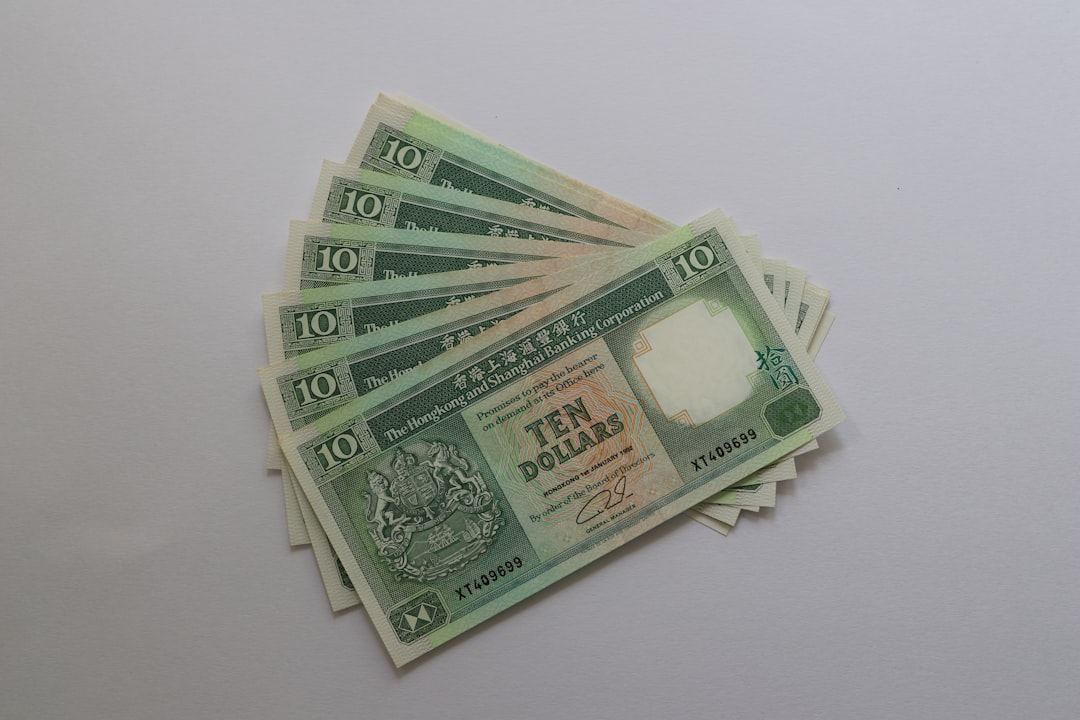Saddam Hussein, the former president of Iraq, is often remembered for his tyrannical rule and the oppressive regime he established. However, one aspect that frequently garners attention is his salary, which was emblematic of the vast wealth and power he accumulated during his time in office. While the exact figures of his earnings remain somewhat elusive, estimates suggest that his official salary was modest compared to the immense fortune he amassed through various means.
This disparity between his declared income and his actual wealth raises questions about the nature of power, corruption, and governance in Iraq during his reign. Hussein’s financial dealings were shrouded in secrecy, reflecting a broader pattern of authoritarian governance where transparency was non-existent. His salary, while officially reported to be a few thousand dollars a month, belied the opulence of his lifestyle and the extensive resources at his disposal.
This contradiction serves as a lens through which to examine not only Hussein’s personal choices but also the systemic issues that allowed such disparities to flourish in a nation rich in oil and resources yet plagued by poverty and oppression.
Key Takeaways
- Saddam Hussein’s salary was estimated to be around billion per year, making him one of the highest-paid world leaders.
- Saddam Hussein rose to power through a combination of political maneuvering, violence, and manipulation of the Iraqi government and military.
- Saddam Hussein spent his earnings on luxurious palaces, extravagant parties, and personal indulgences while many Iraqis lived in poverty.
- The impact of Saddam Hussein’s lavish lifestyle and economic mismanagement led to widespread poverty and suffering in Iraq.
- International reactions to Saddam Hussein’s earnings ranged from condemnation to support, depending on political alliances and interests.
The Rise to Power: How Saddam Hussein Became Dictator
Saddam Hussein’s ascent to power was marked by a combination of political acumen, ruthless ambition, and a series of strategic alliances. Born into a poor family in 1937, he experienced firsthand the struggles of life in rural Iraq. His early involvement in politics began with the Ba’ath Party, which espoused Arab nationalism and socialism.
By aligning himself with influential figures within the party, Hussein quickly climbed the ranks, demonstrating a knack for manipulation and an unyielding desire for control. In 1968, a coup d’état brought the Ba’ath Party to power, and Hussein emerged as a key figure in the new regime. His role as vice president allowed him to consolidate power behind the scenes while presenting a façade of loyalty to then-President Ahmed Hassan al-Bakr.
However, it was not long before Hussein’s ambitions led him to orchestrate al-Bakr’s resignation, positioning himself as the undisputed leader of Iraq. This transition marked the beginning of an era characterized by brutal repression, where dissent was met with violence and fear became a tool for maintaining control.
The Lavish Lifestyle: How Saddam Hussein Spent His Earnings

Saddam Hussein’s lifestyle was nothing short of extravagant, reflecting a man who wielded immense power and wealth. His earnings, though officially modest, were supplemented by various illicit activities, including oil smuggling and embezzlement from state funds. This financial windfall enabled him to indulge in a life of luxury that was starkly contrasted with the struggles faced by ordinary Iraqis.
He owned multiple palaces adorned with gold fixtures, lavish furnishings, and expansive gardens, showcasing his desire for opulence. Beyond his palatial residences, Hussein’s spending habits extended to extravagant parties and celebrations that often featured lavish feasts and entertainment from renowned artists. His penchant for luxury cars and private jets further illustrated his disregard for the economic plight of his citizens.
While millions lived in poverty, Hussein’s lifestyle served as a constant reminder of the vast chasm between the ruling elite and the general populace. This disparity not only fueled resentment among Iraqis but also highlighted the moral decay inherent in a regime that prioritized personal indulgence over national welfare.
The Impact on the Iraqi Economy
| Metrics | Data |
|---|---|
| GDP Growth Rate | -10.9% |
| Unemployment Rate | 15.1% |
| Inflation Rate | 2.3% |
| Government Debt | 125 billion |
The economic landscape of Iraq during Saddam Hussein’s rule was profoundly affected by his financial decisions and policies. While the country was rich in oil reserves, mismanagement and corruption under Hussein’s regime led to significant economic challenges. The focus on military spending and personal enrichment came at the expense of essential services such as healthcare and education.
As resources were diverted to fund lavish projects and maintain an oppressive security apparatus, the average Iraqi faced deteriorating living conditions. Moreover, international sanctions imposed after Iraq’s invasion of Kuwait in 1990 further exacerbated the economic crisis. These sanctions crippled trade and led to widespread shortages of food and medicine, plunging many Iraqis into despair.
Despite the wealth generated from oil exports, Hussein’s regime failed to invest in infrastructure or social programs that could have improved the quality of life for its citizens. Instead, the economy became increasingly reliant on oil revenues while suffering from rampant inflation and unemployment.
International Reactions to Saddam Hussein’s Earnings
The international community’s response to Saddam Hussein’s earnings and lifestyle was complex and often contradictory. On one hand, Western nations initially supported his regime during the Iran-Iraq War in the 1980s, viewing him as a bulwark against Iranian influence in the region. This support included financial aid and military assistance that inadvertently bolstered Hussein’s power and allowed him to maintain his lavish lifestyle.
However, following Iraq’s invasion of Kuwait in 1990, global perceptions shifted dramatically. The United Nations imposed strict sanctions aimed at crippling Hussein’s regime economically. These sanctions highlighted the stark contrast between Hussein’s opulence and the suffering of ordinary Iraqis.
International media coverage often focused on his extravagant palaces while juxtaposing images of malnourished children and impoverished families. This dichotomy fueled outrage among human rights advocates and further isolated Hussein on the world stage.
The Fall from Power: How Saddam Hussein’s Salary Ended

Saddam Hussein’s downfall came swiftly in 2003 when a coalition led by the United States invaded Iraq under the pretext of eliminating weapons of mass destruction. The military campaign quickly dismantled his regime, leading to his capture later that year. As he faced trial for crimes against humanity, discussions surrounding his salary and wealth resurfaced, revealing the extent of his corruption and mismanagement.
In the wake of his capture, investigations into Hussein’s finances uncovered vast sums of money hidden in various accounts around the world. These revelations painted a picture of a leader who had exploited his position for personal gain while neglecting the needs of his people.
The Legacy of Saddam Hussein’s Earnings
The legacy of Saddam Hussein’s earnings is one marked by controversy and reflection on governance in authoritarian regimes. His ability to amass wealth while presiding over widespread human rights abuses serves as a cautionary tale about the dangers of unchecked power. The stark contrast between his opulence and the suffering endured by ordinary Iraqis continues to resonate in discussions about leadership ethics and accountability.
Moreover, Hussein’s financial legacy has had lasting implications for Iraq’s political landscape post-2003. The corruption that characterized his regime has persisted in various forms, complicating efforts to rebuild trust in government institutions. As Iraq continues to grapple with its past, Hussein’s earnings serve as a reminder of the need for transparency and accountability in leadership to prevent similar abuses from occurring in the future.
Comparison to Other Dictators’ Salaries
When comparing Saddam Hussein’s salary and wealth to those of other dictators throughout history, patterns emerge that highlight common traits among authoritarian leaders. Many dictators have been known to live lavishly while their citizens suffer from poverty and oppression. For instance, leaders like Muammar Gaddafi of Libya and Robert Mugabe of Zimbabwe also amassed significant fortunes while their countries faced economic turmoil.
These comparisons underscore a troubling reality: dictators often prioritize personal enrichment over national welfare, leading to widespread suffering among their populations. The salaries of such leaders are frequently dwarfed by their hidden wealth acquired through corruption and exploitation of state resources. This phenomenon raises important questions about governance, accountability, and the moral responsibilities of those in power.
The Human Rights Violations Funded by Saddam Hussein’s Salary
Saddam Hussein’s earnings were not merely a reflection of personal greed; they were also intricately linked to systemic human rights violations perpetrated during his regime. The funds he amassed enabled him to maintain an extensive security apparatus that suppressed dissent through violence and intimidation. Torture chambers, mass graves, and campaigns against ethnic minorities were all financed by resources that could have been used for public welfare.
The connection between Hussein’s wealth and human rights abuses serves as a stark reminder of how financial power can be wielded as a tool for oppression. As he indulged in luxury while millions suffered under his rule, it became evident that his earnings were not just personal gains but also instruments of terror used against those who dared to oppose him.
The Investigation into Saddam Hussein’s Hidden Wealth
Following Saddam Hussein’s capture, extensive investigations were launched into his hidden wealth and financial dealings. These inquiries revealed a complex web of offshore accounts, shell companies, and illicit transactions that allowed him to amass significant resources beyond what was publicly known. Estimates suggest that he may have hidden billions of dollars in various locations around the world.
The investigation into Hussein’s wealth highlighted not only his personal corruption but also systemic issues within global financial systems that enable such practices to occur. The challenge of tracing illicit funds underscores the need for greater transparency and cooperation among nations to combat corruption effectively.
Lessons Learned from Saddam Hussein’s Lavish Earnings
The story of Saddam Hussein’s lavish earnings offers critical lessons about governance, accountability, and ethical leadership. It serves as a reminder that unchecked power can lead to corruption and abuse on an unprecedented scale. The stark contrast between his wealth and the suffering endured by ordinary Iraqis underscores the importance of transparency in leadership roles.
Moreover, Hussein’s legacy prompts reflection on how societies can prevent similar abuses from occurring in the future. Establishing robust systems for accountability, promoting civic engagement, and fostering a culture of transparency are essential steps toward ensuring that leaders prioritize public welfare over personal gain. Ultimately, learning from history is crucial in shaping a more just and equitable future for all nations.
In exploring the financial aspects of historical figures, one might find it intriguing to delve into the details of Saddam Hussein’s salary during his time in power. For those interested in uncovering more fascinating historical facts and trivia, you can check out a related article on the topic by visiting Hey, Did You Know This?. This site offers a plethora of interesting insights and lesser-known information that can enrich your understanding of various historical events and figures.
WATCH NOW! How the US Hunted and Captured Saddam Hussein: The Untold Story of Operation Red Dawn
FAQs
What was Saddam Hussein’s salary as the President of Iraq?
Saddam Hussein’s salary as the President of Iraq was reported to be around $25,000 per year.
Did Saddam Hussein receive any additional benefits or perks as President?
In addition to his salary, Saddam Hussein had access to various perks and benefits, including luxurious accommodations, personal security, and access to state resources.
How did Saddam Hussein’s salary compare to other world leaders?
Saddam Hussein’s salary was relatively low compared to other world leaders. For example, the President of the United States at the time was earning a salary of around $200,000 per year.
Was Saddam Hussein’s salary subject to change during his time in power?
There is no public information indicating that Saddam Hussein’s salary as President of Iraq changed during his time in power. It remained relatively consistent throughout his rule.
